| View previous topic :: View next topic |
| Author |
Message |
Billou

Joined: 01 Feb 2013
Posts: 169
Location: Germany
Expire: 2015-05-19
|
 Posted: Fri Apr 25, 2014 7:17 pm Post subject: Posted: Fri Apr 25, 2014 7:17 pm Post subject: |
 |
|
Billou wrote:
Woodrim, this is beautiful...  Well done. Well done. |
|
| Back to top |
|
 |
thundertwin72

Joined: 28 Sep 2011
Posts: 43
Location: Barcelona
Expire: 2013-12-16
|
 Posted: Fri Apr 25, 2014 10:22 pm Post subject: Posted: Fri Apr 25, 2014 10:22 pm Post subject: |
 |
|
thundertwin72 wrote:
| woodrim wrote: |
Was sitting on my front porch this evening as the sun was setting. Series 1 Bokina at f/2.5 using NEX-5N...
 |
A beautiful and wonderful image, congratulations.
Regards.
_________________
DSLR: Canon 50D, Canon 1000D.
EVIL: Olympus e-pl1, Fuji X-E1.
SLR: Fujica ST801, Praktica MTL5B, Praktica MTL50, Pentax MX, Pentax ME Super, Pentax K1000, Canon A1, Canon AE1 Program, Canon T60, Canon EF, Canon FTb QL, Minolta SRT-101, Minolta XG9, Nikon FE2, Nikon FM2n, Nikon FM, Nikon FE, Nikon FA, Olympus OM-1, Olympus OM-10, Yashica FX-3, Yashica FX-3 Super 2000, Contax 137MA Quartz, Contax RTS, Zenit E, Zenit EM, Зенит ET, Contaflex II, Contaflex IV, Киев 60 TTL.
Rangefinder: ФЗД-2, Зоркий-4, Киев-4.
Rangefinder fixed lens: Yashica Electro GSN, Yashica Electro GX, Yashica Minister D, Yashica Lynx 14E, Yashica Lynx 5000E, Canonet QL17, Olympus 35RC.
TLR: Flexaret II Flexaret IIa, Flexaret IIIa, Flexaret IV, Flexaret IVa, Flexaret Va, Flexaret VI Automat, Flexaret VIa Automat, Flexaret Standard, Flexaret VII Automat, Weltaflex, Rolleicord Va, Yashica Mat 124G.
LENSES:
(m42): Chinon 2.5/24, Super Takumar 3.5/28, Pentacon 2.8/29, Pentacon 3.5/30, Chinon Auto 2.8/35, Super Takumar 1.4/50, SMC Takumar 1.4/50,EBC Fujinon 1.4/50, Pentacon 1.8/50, EBC Fujinon 1.8/55, Helios 44-2 2/58, Helios 44M 2/58, Helios-44M4 2/58, Vivitar Series 1 2.5/90, Pentacon 2.8/135, CZJ Sonnar 3.5/135, MC Юпитер-37AM 3.5/135, Kenlock 4/200, Jupiter-21M 4.5/200.
(PK): SMC Pentax-M 1.4/50, SMC Pentax-M 1.7/50, SMC Pentax-A 1.7/50, Kiron 2.8/105.
(C/Y): Yashica ML 1.9/50, Yashica ML 1.7/50, Vivitar 2.8/28, Panagor 2.8/90, Zeiss Planar *T 1.4/50, Zeiss Planar *T 1.7/50.
(FD): Soligor 2.5/28, Canon FD 1.4/50, Canon FD 1.4/50 SSC, Canon FDn 1.4/50, Canon FD 1.8/50 SC, Canon FDn 1.8/50, Vivitar 2.8/55.
(MD): Rokkor PF 1.7/50, Rokkor MD 1.7/50.
(F): Nikkor AI-S 2/35, Nikkor AI 2.8/35, Nikkor AI 1.4/50, Nikkor AI-S 1.4/50, Nikkor AI-S 1.8/50 "Long Nose", Nikkor AI-S 1.8/50, E Series 1.8/50, Nikkor AI 2/50, МС Гелиос-81Н 2/50, Panagor 3/55, Hoya 2.8/135, Hoya 3.5/35-105.
(OM): Zuiko Auto-S 1.8/50.
(Konica AR):Hexanon 1.8/40.
(Pentacon Six): MC Волна-3 2.8/80.
(LTM): Юпитер-8 2/50, И-26м 2,8/52.
(Contax/Kiev): Юпитер-8М f2/5cm.
|
|
| Back to top |
|
 |
edri

Joined: 26 Oct 2014
Posts: 315
Location: walking in the air
|
 Posted: Mon Nov 03, 2014 12:34 pm Post subject: Posted: Mon Nov 03, 2014 12:34 pm Post subject: |
 |
|
edri wrote:
What is the minimum working distance (from the front of the lens not from the sensor plane) for this lens,
either Tokina or Vivitar (without and with the proprietary 1:1 extender)? |
|
| Back to top |
|
 |
marcusBMG

Joined: 07 Dec 2012
Posts: 1304
Location: Conwy N Wales
|
 Posted: Mon Nov 03, 2014 1:09 pm Post subject: Posted: Mon Nov 03, 2014 1:09 pm Post subject: |
 |
|
marcusBMG wrote:
You can use calculators like this to work out focus distances
http://www.mystd.de/album/calculator/
1:1 with 90mm lens is focus distance of 0.2m. relate that to the extension of your lens and you can figure out the CWD
_________________
pentax ME super (retired)
Pentax K3-ii; pentax K-S2; Samsung NX 20; Lumix G1 + adapters;
Adaptall collection (proliferating!) inc 200-500mm 31A, 300mm f2.8, 400mm f4.
Primes: takumar 55mm; smc 28mm, 50mm; kino/komine 28mm f2's, helios 58mm, Tamron Nestar 400mm, novoflex 400mm, Vivitar 135mm close focus, 105mm macro; Jupiter 11A; CZJ 135mm.
A classic zoom or two: VS1 (komine), Kiron Zoomlock... |
|
| Back to top |
|
 |
uhoh7

Joined: 24 Nov 2010
Posts: 1300
Location: Idaho, USA
|
 Posted: Mon Nov 03, 2014 5:39 pm Post subject: Posted: Mon Nov 03, 2014 5:39 pm Post subject: |
 |
|
uhoh7 wrote:
nice shot woodrim !
I found my copy in New Zealand, LN, in MD mount, and had to pay something like 275 for it. Maybe more. Of course I read all the stories about it first LOL.
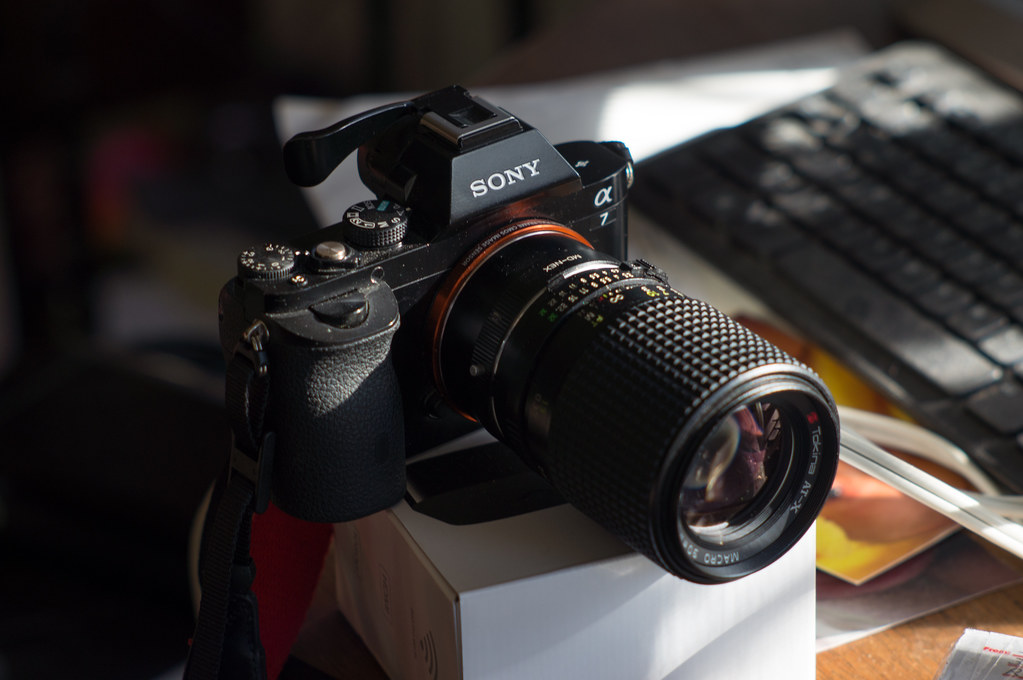
DSC02068 by unoh7, on Flickr
Around the same time I also found a 105/2.5 Kiron, which is scratch free but has some haze. It's still wildly sharp, but I doubt it has the contrast it should: but it was only 125USD.
I use 90s alot, bought the at-x for my nex-5, where it was outstanding.
But one day I did a shootout with my little TE90 thin, and found it was also very good on the Nex and much easier to carry! Of course the TE is an everyday 90 and can't do the close work, plus it does not do OOF like the Bokina, but it's mobility trumped those issues.
Now I shoot 95% with:

DSC02767 by unoh7, A7 + Bokina @ f/4ish
and my two main 90s are the little CV 90/3.5 APO and the ultra-modern 90/2.5 Leica.
But I still have great affection for the Bokina, and it really does deliver on the A7 

DSC02790 by unoh7, A7 Bokina

DSC02810 by unoh7, A7 Bokina
Now, to be fair the A7 makes good bokeh with nearly any lens--a side effect of it's thick filter stack I suspect, but the tokina seems especially creamy 
For reference (shot on m9):
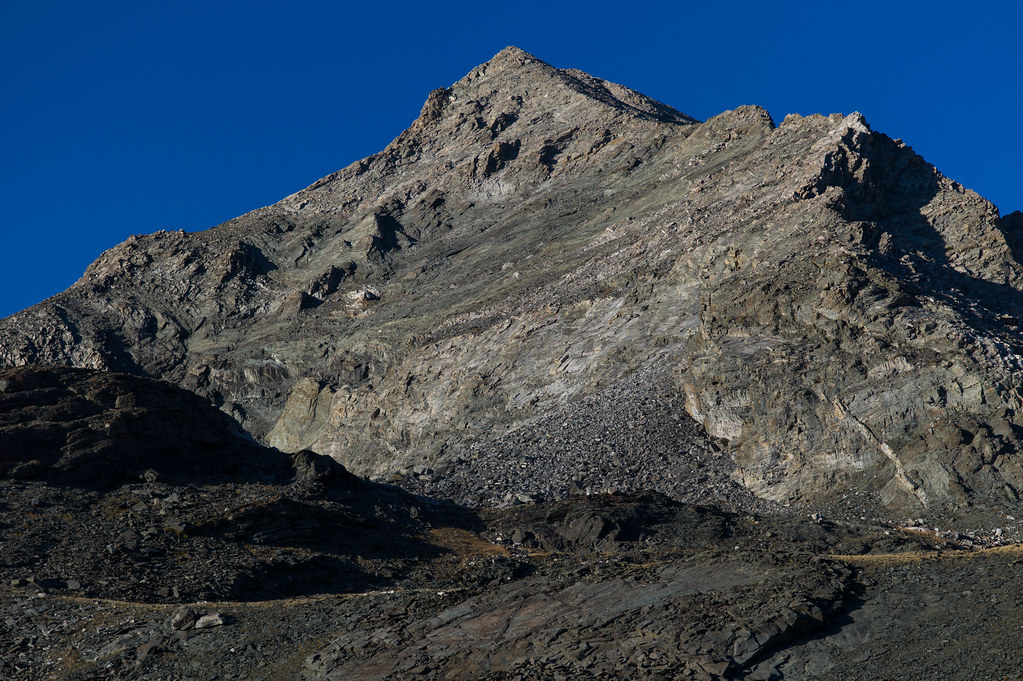
L1021320 by unoh7, CV 90/3.5 APO @ f/5.6
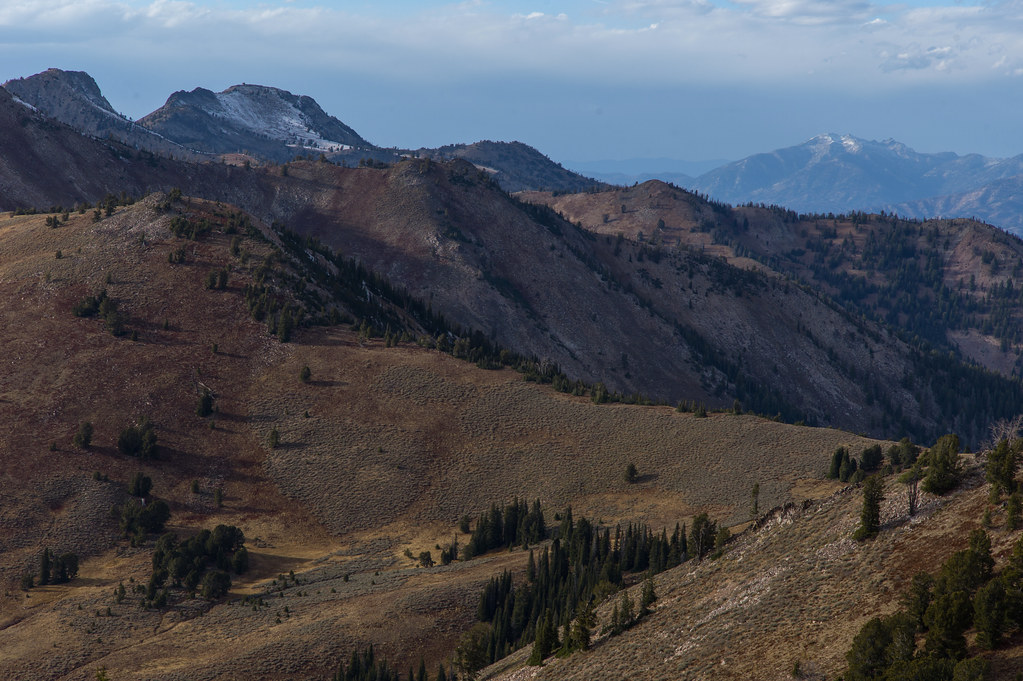
Boardman Pass by unoh7, Leica 90/2.5 f/5.6
I think the Bokina can easily compete with these lenses at infinity, but I'm too fat to drag it up to really see 
_________________
Making MFlenses safe for the letter *L*  |
|
| Back to top |
|
 |
mlnola
Joined: 14 Dec 2015
Posts: 1
Location: new orleans
|
 Posted: Mon Dec 14, 2015 2:37 am Post subject: Posted: Mon Dec 14, 2015 2:37 am Post subject: |
 |
|
mlnola wrote:
This post has been invigorating,
I have several vivitar 90mm 2.5 used with Minolta then canon with FD EOS adapter
I jumped ship for nikon 800E and just edit purchased bokina on ebay $410 hopefully good shape with 1.1 adalter, cases etc.
Will reply with results
_________________
Tony with mlnola
Minolta to Canon to Nikon |
|
| Back to top |
|
 |
woodrim


Joined: 14 Jan 2010
Posts: 4060
Location: Charleston
|
 Posted: Mon Dec 14, 2015 3:11 am Post subject: Posted: Mon Dec 14, 2015 3:11 am Post subject: |
 |
|
woodrim wrote:
uhoh7: Given your discriminating taste in lenses, it is a great endorsement.
_________________
Regards,
Woodrim |
|
| Back to top |
|
 |
Eriksen


Joined: 15 Nov 2016
Posts: 153
|
 Posted: Fri Dec 16, 2016 2:24 am Post subject: Posted: Fri Dec 16, 2016 2:24 am Post subject: |
 |
|
Eriksen wrote:
This is a very good thread for comparing the best lenses in this class, but I can´t find any comments or pictures taken with the Yashica 100mm 3.5 which also is a very good lens. Can this lens be just as good or better than the Bokina? |
|
| Back to top |
|
 |
aspen


Joined: 15 Dec 2010
Posts: 307
Location: Maryland, USA
Expire: 2014-02-20
|
 Posted: Sat Dec 24, 2016 2:10 am Post subject: Posted: Sat Dec 24, 2016 2:10 am Post subject: |
 |
|
aspen wrote:
| Eriksen wrote: |
| This is a very good thread for comparing the best lenses in this class, but I can´t find any comments or pictures taken with the Yashica 100mm 3.5 which also is a very good lens. Can this lens be just as good or better than the Bokina? |
The 90mm 2.5 is in a different class. The "legendary" class. There isn't any comparison from any other lens.
_________________
Cameras; Sony Nex5n Lenses; Konica Hexanons; 21mm f2.8, 40mm f1,8, 50mm f1.4, 50mmf1.7,57mm f1.4, 100mm f2.8, 135mm f3.2, 200mm f4, MC Helios 77M-4 50mm f1.8, Jupiter 8 50 f2, Super Takumar 85mm f1.9, Vivitar Series 1 90mm f2.5 (Macro), Steinheil Munchen Culminar 85mm f2.8, Steinheil Munchen Exagon 35mm f2.8, Jupiter 37A 135mm, Astra Berlin 135mm f3.5, Angenieux 180mm f4 , Tair 3-PhS 300mm f4.5 |
|
| Back to top |
|
 |
piggsy


Joined: 04 May 2015
Posts: 84
Location: Brisbane, Australia
|
 Posted: Wed Feb 08, 2017 10:40 pm Post subject: Posted: Wed Feb 08, 2017 10:40 pm Post subject: |
 |
|
piggsy wrote:
Some from the Bokina from spring/summer's big butterfly migration of caper white butterflies. The whole album of all of 'em is over here - https://www.flickr.com/photos/piggsyface/sets/72157679920489846 but these are just the bokina ones.
Cross polarised + diffused flash, + stacked raynox 150+250, focus stacks
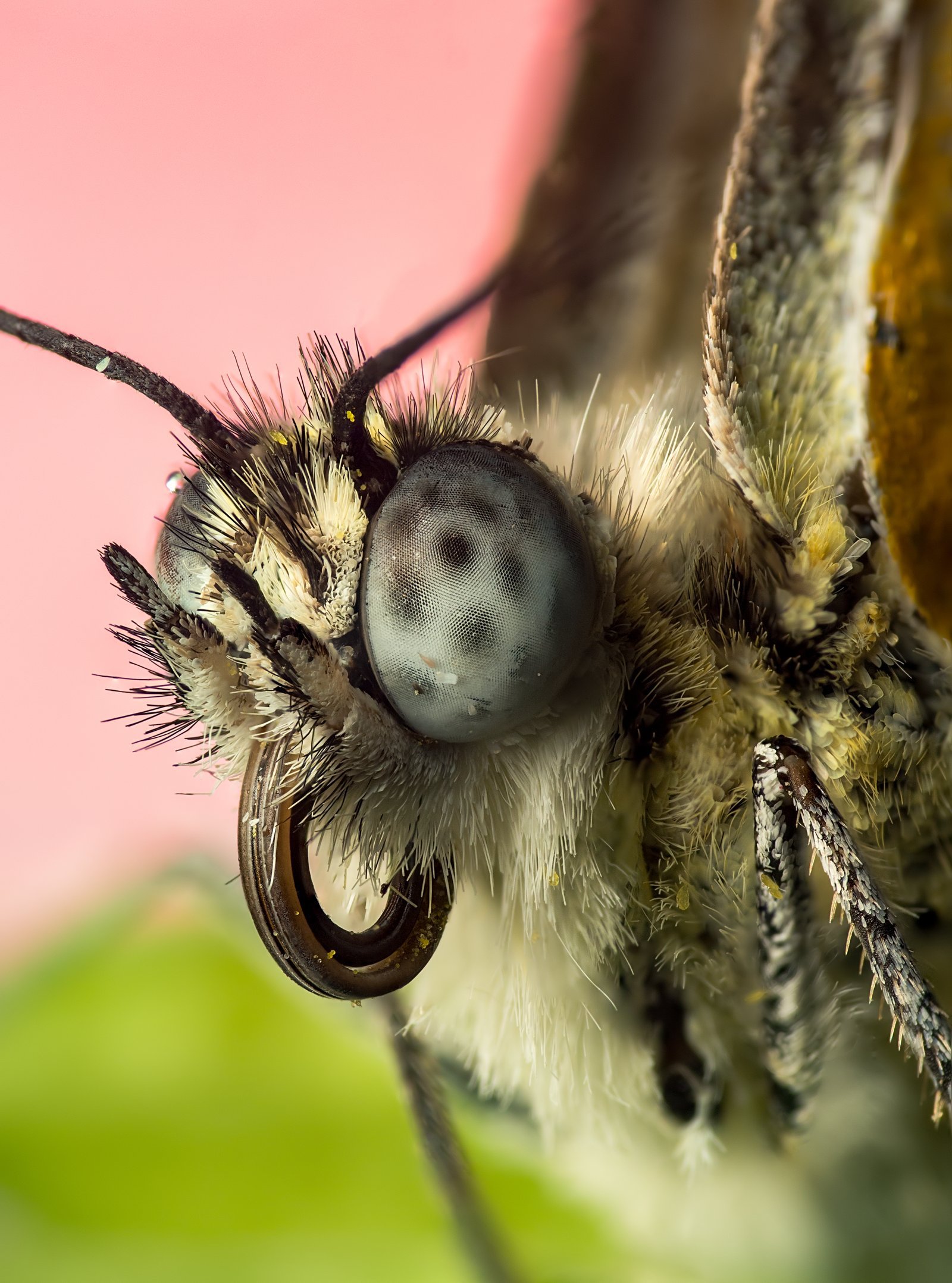

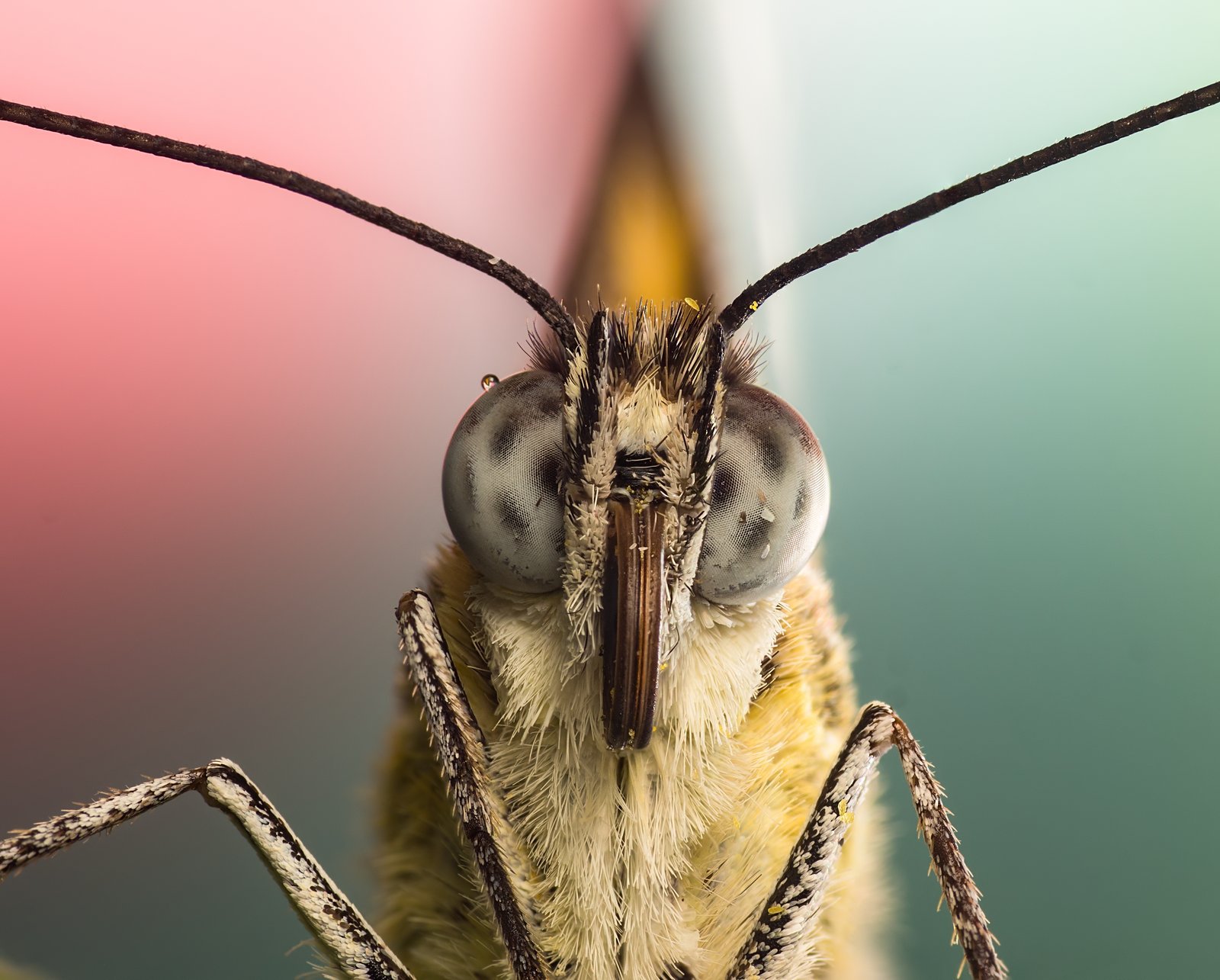

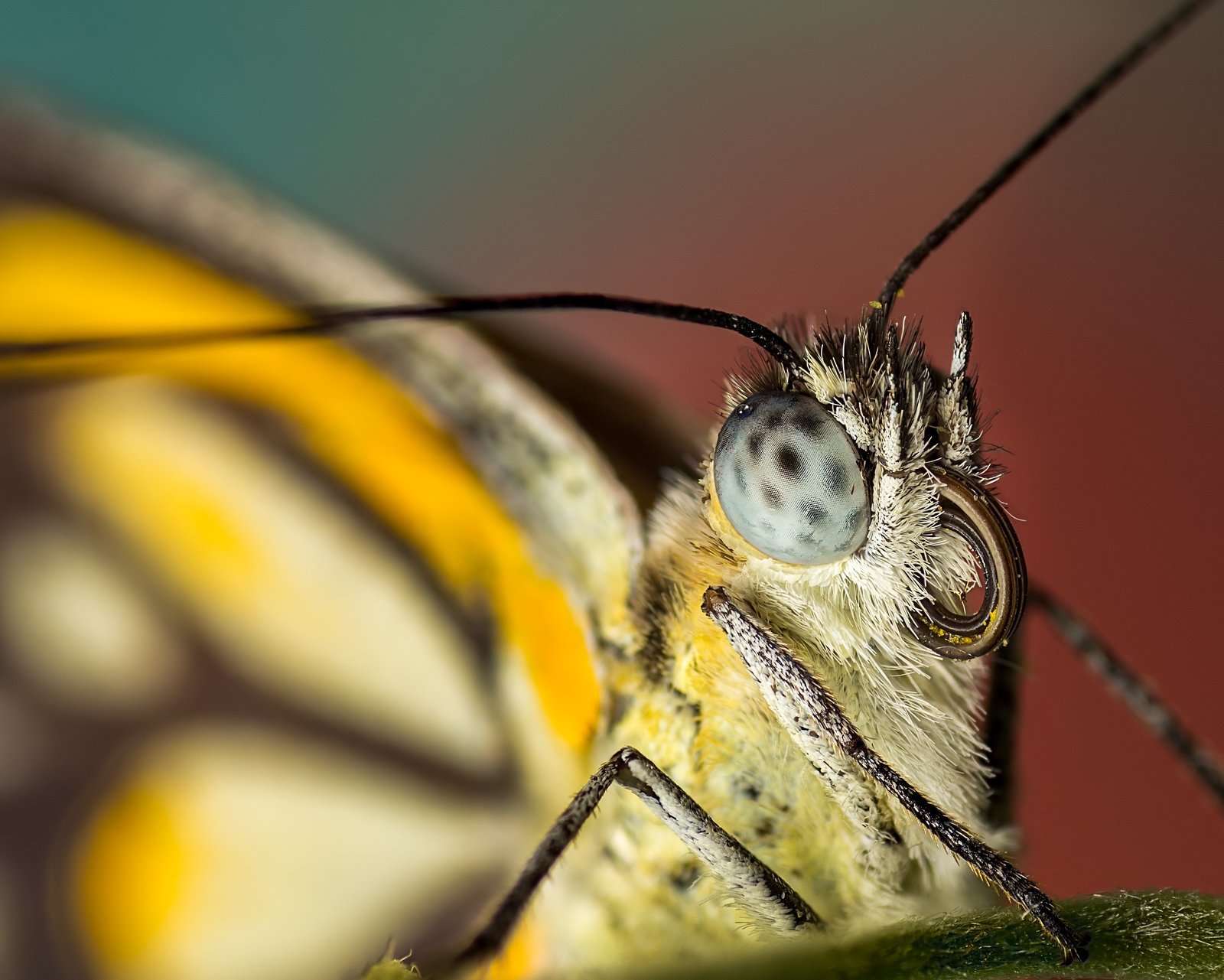
Cross polarised + diffused flash, raynox 150 focus stack

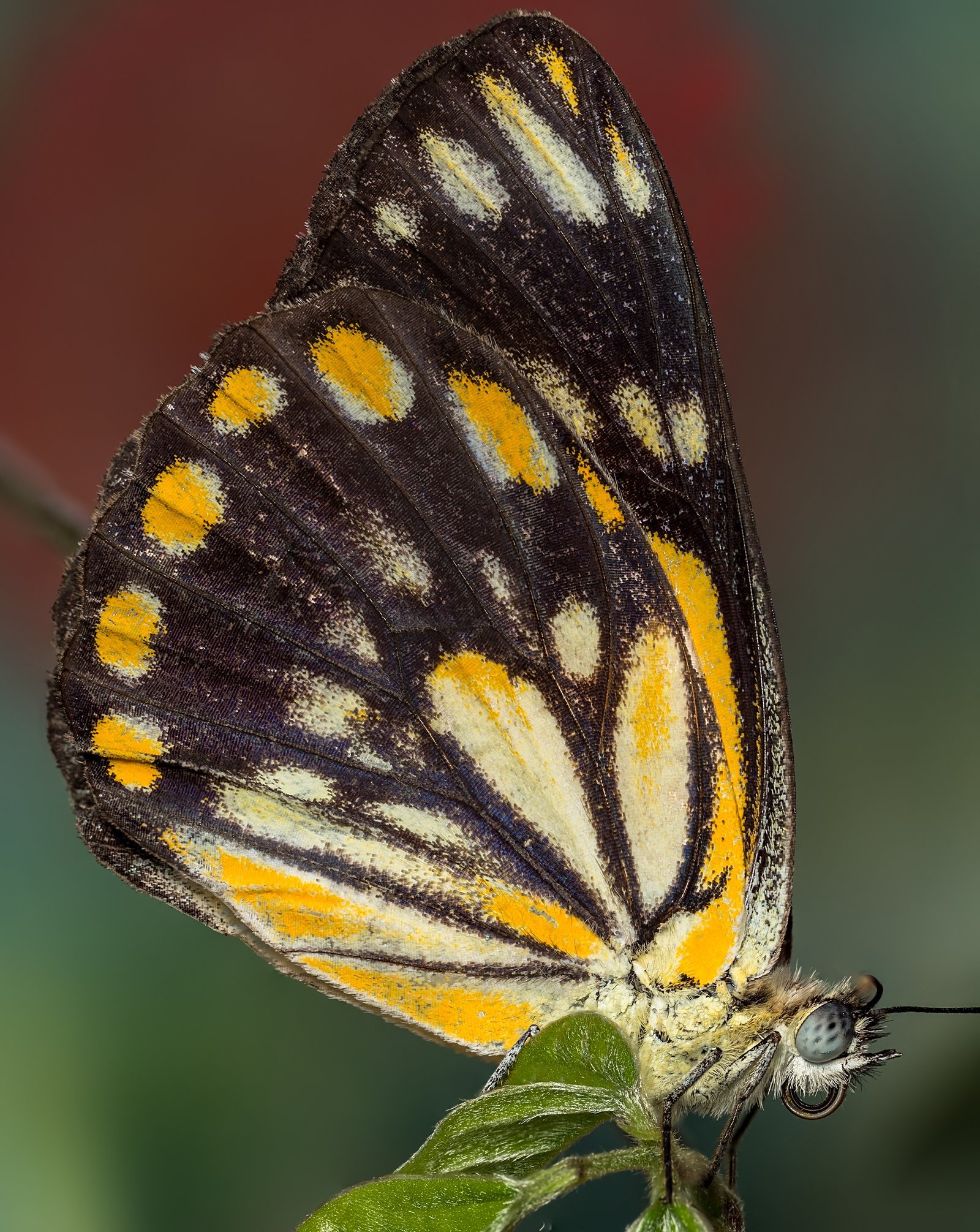
Natural light, lens only
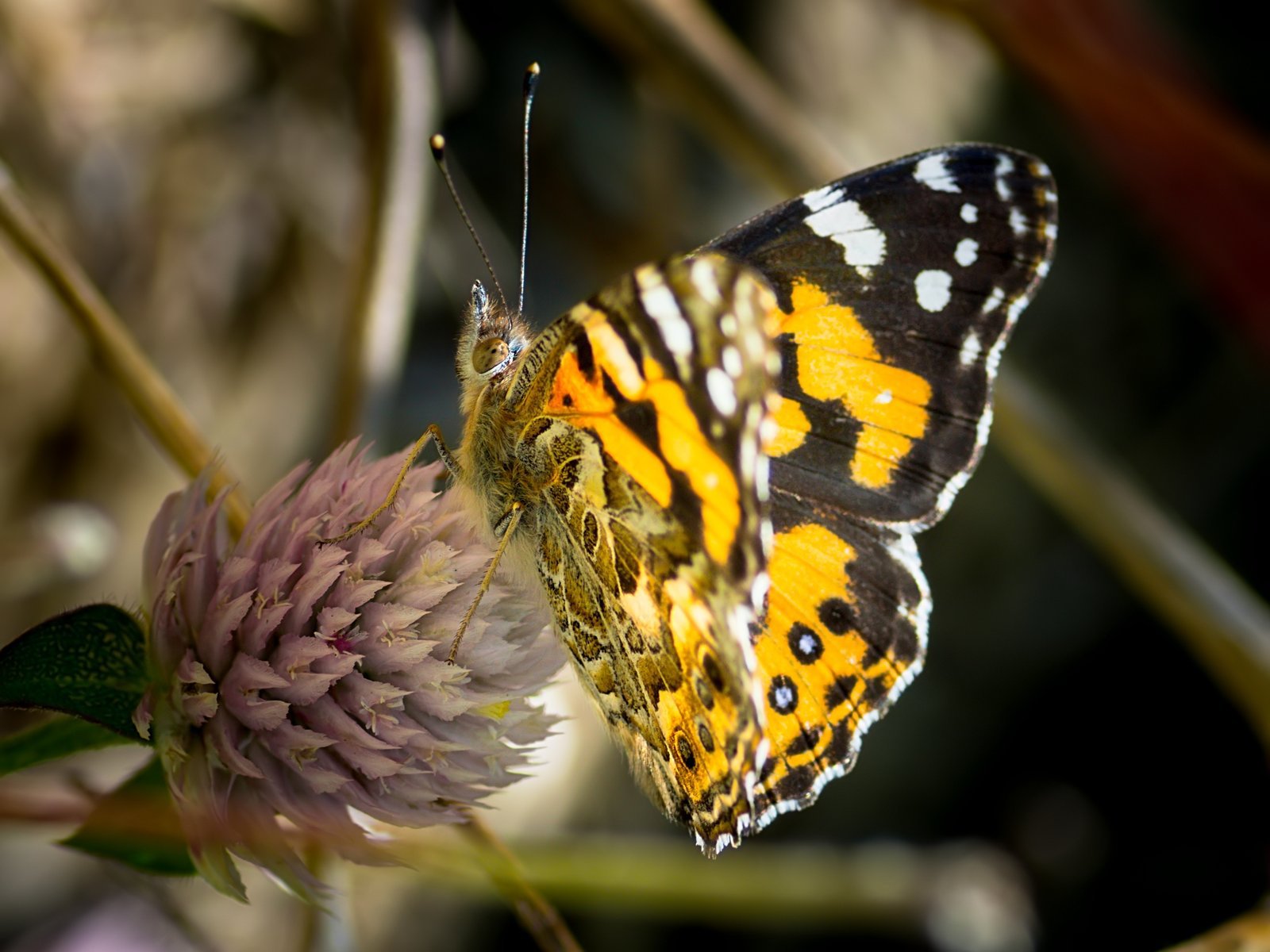
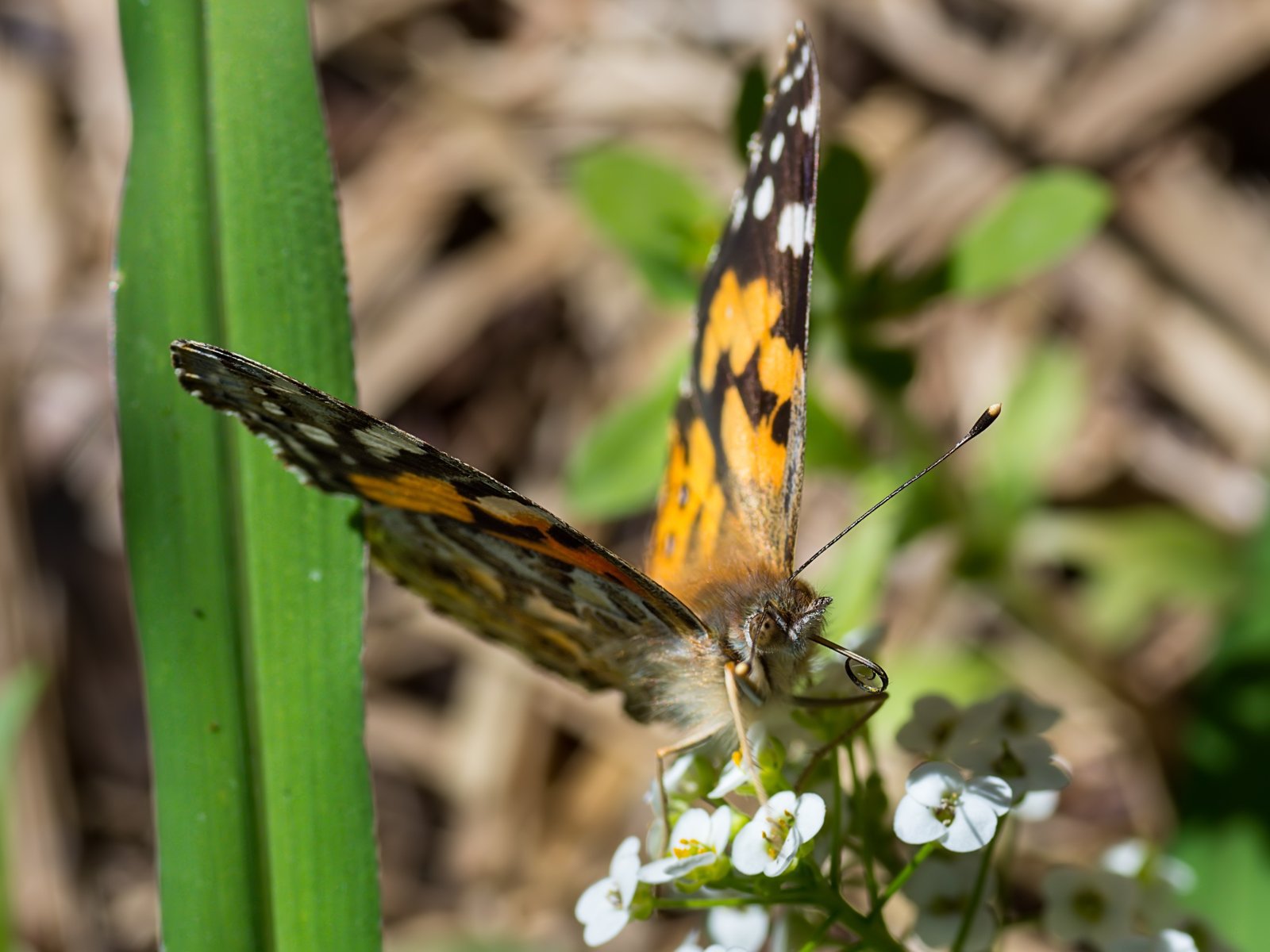
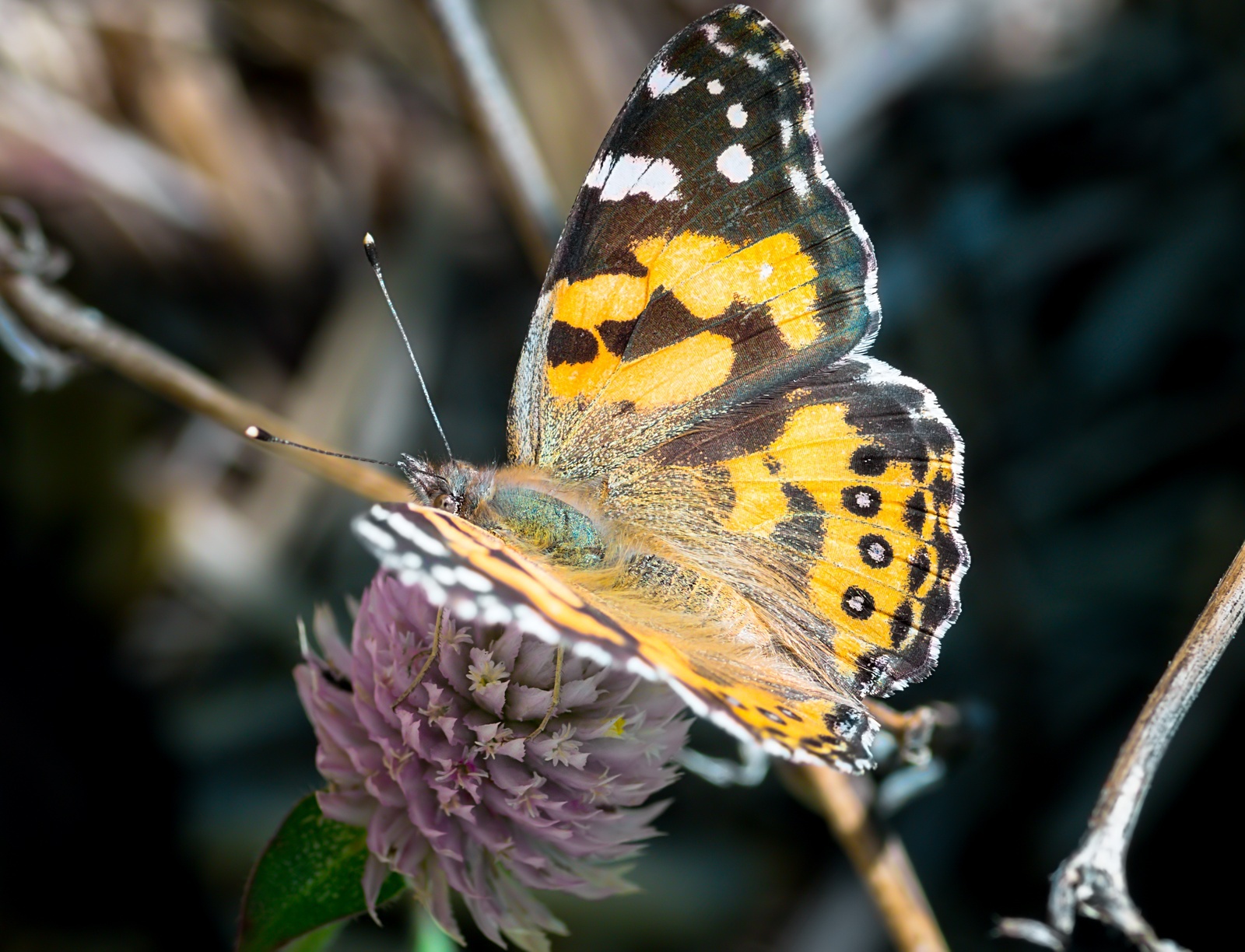
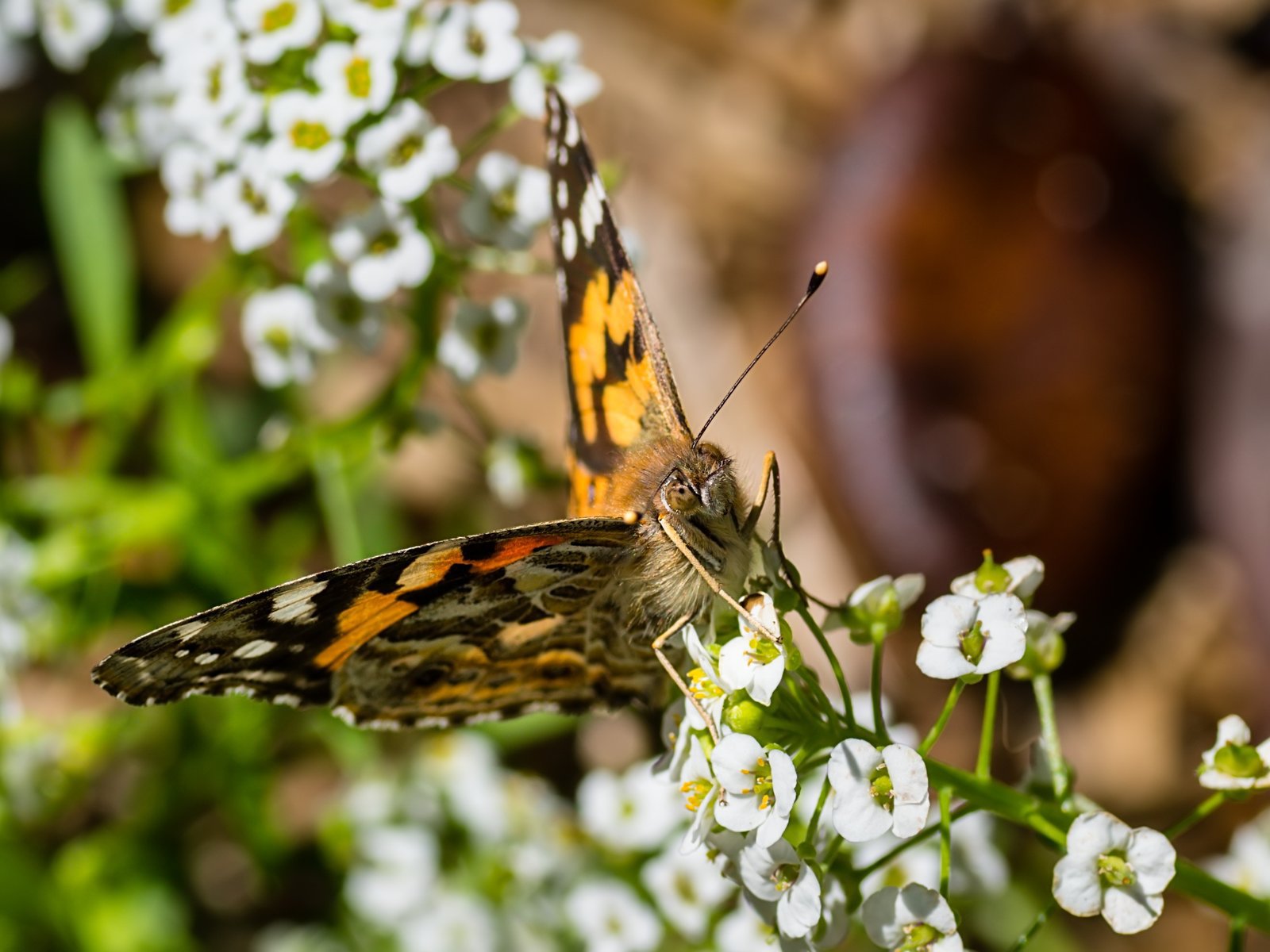
Diffused flash, lens only

Cross polarised flash, raynox 250
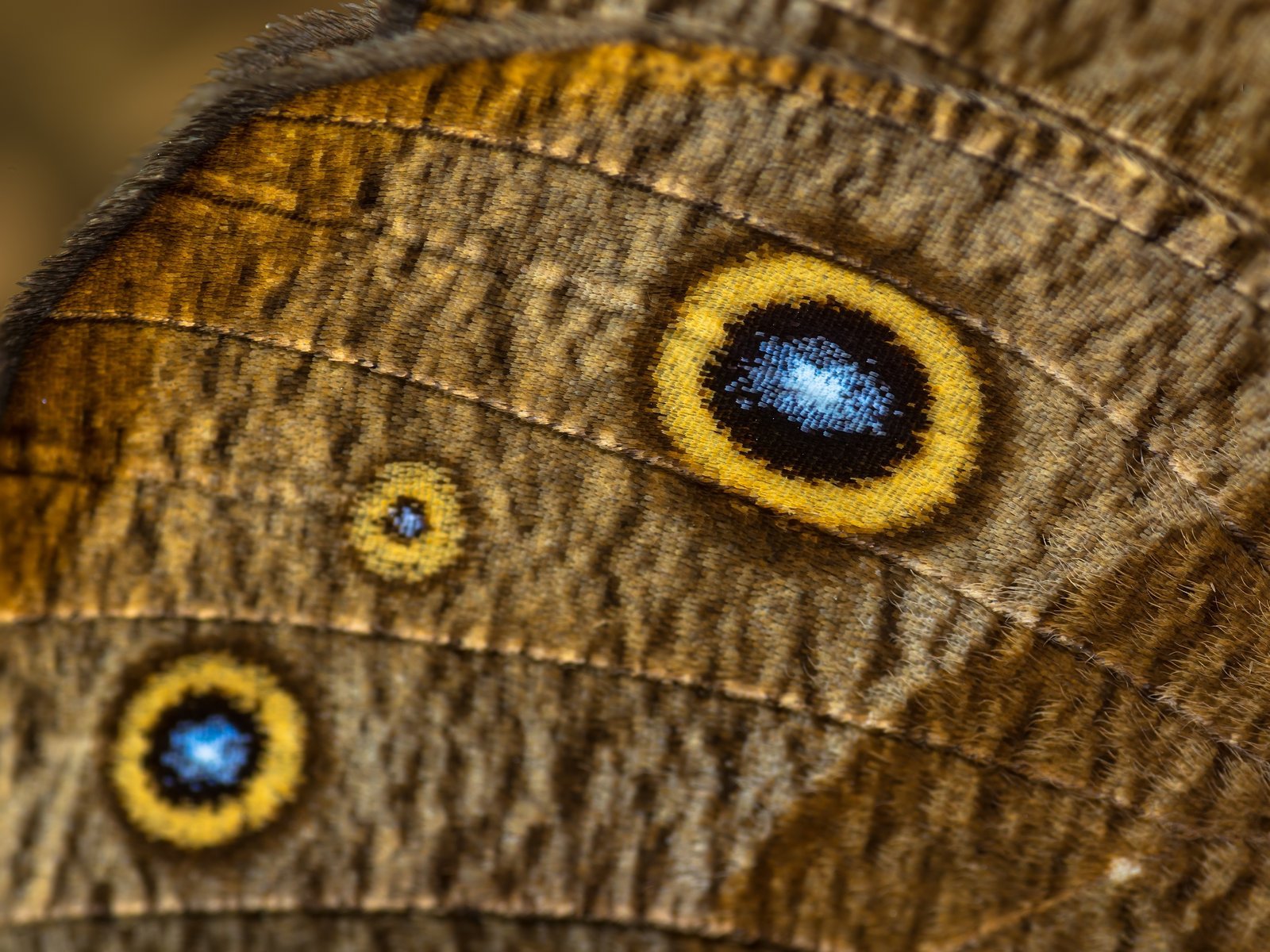
Natural light focus stacks

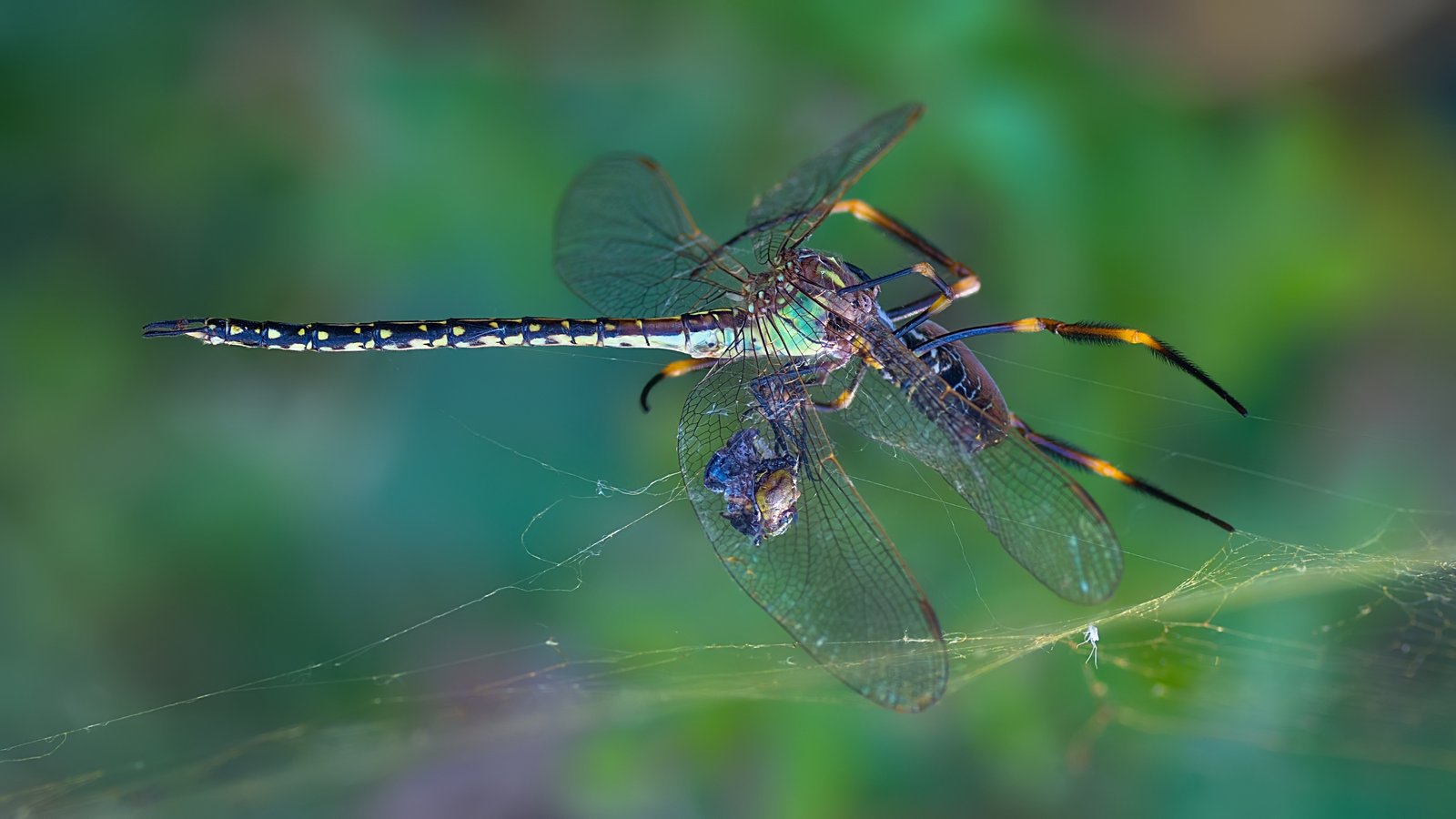

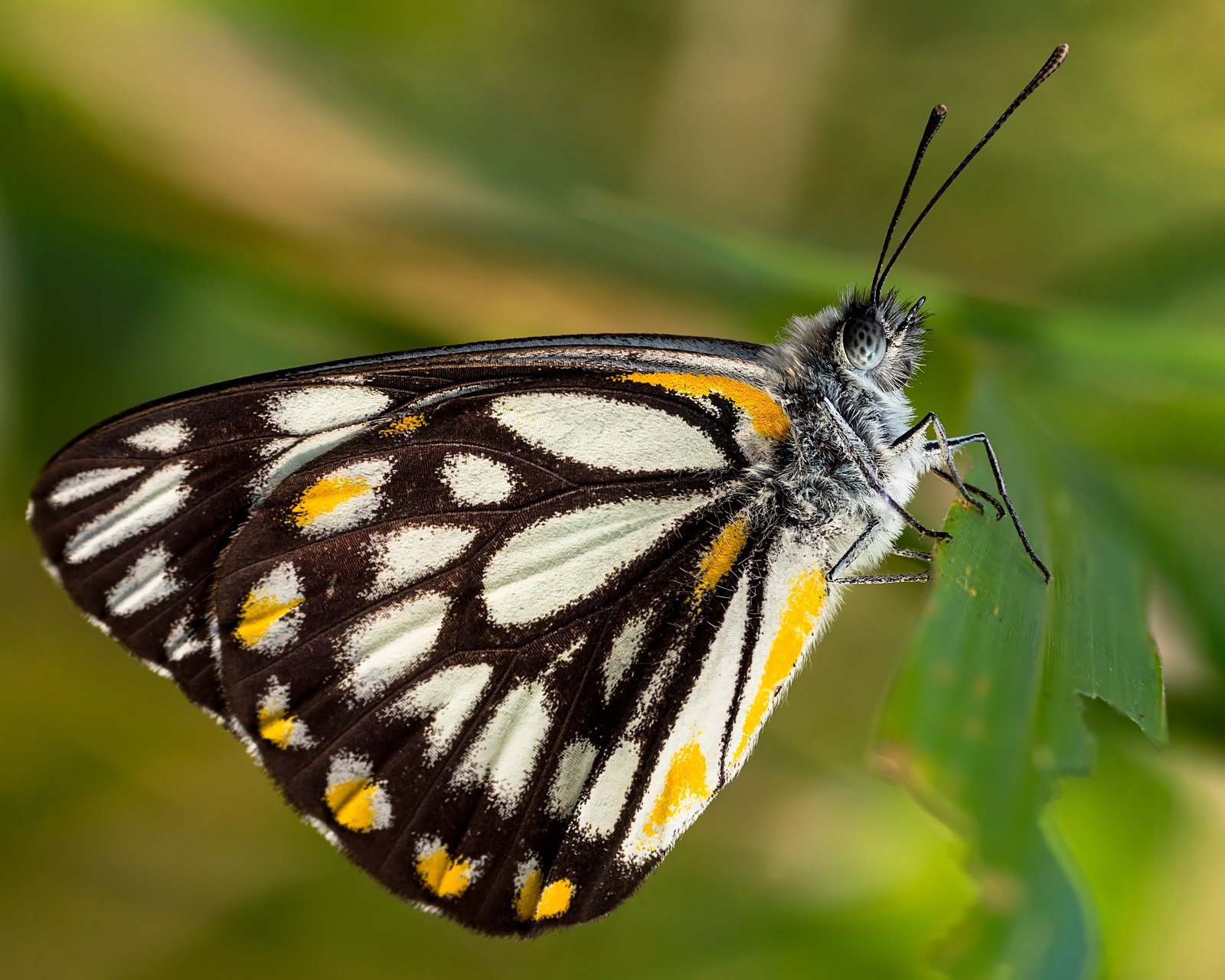
Also, after buying it in April 2016 and relying on someone to on-ship it to me from the US, I finally, finally got hold of the native 1:1 macro extender for this thing. Just in time for me to have gotten big into using cross polarised flash for macro and needing a new diameter cir-pl to use it properly  . I can fit it to my raynox but by then you're at about 2x magnification on 2x crop minimum . I can fit it to my raynox but by then you're at about 2x magnification on 2x crop minimum 
_________________
https://www.flickr.com/photos/piggsyface/
You can't fax glitter. |
|
| Back to top |
|
 |
woodrim


Joined: 14 Jan 2010
Posts: 4060
Location: Charleston
|
 Posted: Wed Feb 08, 2017 10:54 pm Post subject: Posted: Wed Feb 08, 2017 10:54 pm Post subject: |
 |
|
woodrim wrote:
SHARP.
_________________
Regards,
Woodrim |
|
| Back to top |
|
 |
Lloydy


Joined: 02 Sep 2009
Posts: 7785
Location: Ironbridge. UK.
Expire: 2022-01-01
|
 Posted: Wed Feb 08, 2017 11:59 pm Post subject: Posted: Wed Feb 08, 2017 11:59 pm Post subject: |
 |
|
Lloydy wrote:
WOW.....that is impressive. Not just the lens, the technique and skills are just as impressive. 
_________________
LENSES & CAMERAS FOR SALE.....
I have loads of stuff that I have to get rid of, if you see me commenting about something I have got and you want one, ask me.
My Flickr https://www.flickr.com/photos/mudplugga/
My ipernity -
http://www.ipernity.com/home/294337 |
|
| Back to top |
|
 |
piggsy


Joined: 04 May 2015
Posts: 84
Location: Brisbane, Australia
|
 Posted: Thu Feb 09, 2017 12:27 am Post subject: Posted: Thu Feb 09, 2017 12:27 am Post subject: |
 |
|
piggsy wrote:

Should mention most of those natural light ones are at F2.5 also. That's the real strength of it, I think - I have other macros that are lighter, better corrected, longer, whatever, but the bokina's versatility where you get truly excellent starting material out of it from f2.5 to f16 (and f22 perfectly usable also) even on 2x crop is what pushes it into the next level. Should also credit Neat Image software with some of the sharpness too I think 
| Lloydy wrote: |
WOW.....that is impressive. Not just the lens, the technique and skills are just as impressive.  |
Thanks! The closeups of the caper white's face were probably the hardest PP job I've ever had to do, it's really a job for a bi-telecentric "proper" high magnification optic I think - caper whites aren't the largest butterflies there are. Having things change in dimensions in front of and behind the focal point, and all those scales and protruding hairs, means a lot of cleaning up focus stacks with a 4px size brush  . There are a few things like dark OOF areas and the antenna seeming to change position as they cross different contrasting surfaces that look like errors in PP but are actually there in single exposures as well. But, really, with stacked diopters and a 2x crop factor and on digital you're so far beyond the magnification this was ever designed for it's kind of amazing to get anything good out of it at all . There are a few things like dark OOF areas and the antenna seeming to change position as they cross different contrasting surfaces that look like errors in PP but are actually there in single exposures as well. But, really, with stacked diopters and a 2x crop factor and on digital you're so far beyond the magnification this was ever designed for it's kind of amazing to get anything good out of it at all 
_________________
https://www.flickr.com/photos/piggsyface/
You can't fax glitter. |
|
| Back to top |
|
 |
marcusBMG

Joined: 07 Dec 2012
Posts: 1304
Location: Conwy N Wales
|
 Posted: Thu Feb 09, 2017 4:42 pm Post subject: Posted: Thu Feb 09, 2017 4:42 pm Post subject: |
 |
|
marcusBMG wrote:
Very impressive work piggsy. 
_________________
pentax ME super (retired)
Pentax K3-ii; pentax K-S2; Samsung NX 20; Lumix G1 + adapters;
Adaptall collection (proliferating!) inc 200-500mm 31A, 300mm f2.8, 400mm f4.
Primes: takumar 55mm; smc 28mm, 50mm; kino/komine 28mm f2's, helios 58mm, Tamron Nestar 400mm, novoflex 400mm, Vivitar 135mm close focus, 105mm macro; Jupiter 11A; CZJ 135mm.
A classic zoom or two: VS1 (komine), Kiron Zoomlock... |
|
| Back to top |
|
 |
Lightshow


Joined: 04 Nov 2011
Posts: 3669
Location: Calgary
|
 Posted: Fri Feb 10, 2017 9:54 am Post subject: Posted: Fri Feb 10, 2017 9:54 am Post subject: |
 |
|
Lightshow wrote:
Wonderful shots piggsy, thanks for sharing.
_________________
A Manual Focus Junky...
One photographers junk lens is an artists favorite tool.
My lens list
http://www.flickr.com/photos/lightshow-photography/ |
|
| Back to top |
|
 |
Gardener

Joined: 22 Sep 2013
Posts: 950
Location: USA
|
 Posted: Fri Feb 10, 2017 3:40 pm Post subject: Posted: Fri Feb 10, 2017 3:40 pm Post subject: |
 |
|
Gardener wrote:
PP is pretty amazing, focus stacking is something that I badly want to learn. |
|
| Back to top |
|
 |
cooltouch


Joined: 15 Jan 2009
Posts: 9097
Location: Houston, Texas
|
 Posted: Fri Feb 10, 2017 7:37 pm Post subject: Posted: Fri Feb 10, 2017 7:37 pm Post subject: |
 |
|
cooltouch wrote:
| piggsy wrote: |
Should mention most of those natural light ones are at F2.5 also. That's the real strength of it, I think - I have other macros that are lighter, better corrected, longer, whatever, but the bokina's versatility where you get truly excellent starting material out of it from f2.5 to f16 (and f22 perfectly usable also) even on 2x crop is what pushes it into the next level. Should also credit Neat Image software with some of the sharpness too I think 
[ . . . ]
Having things change in dimensions in front of and behind the focal point, and all those scales and protruding hairs, means a lot of cleaning up focus stacks with a 4px size brush  . . |
I too am a novice at focus stacking and would like to know more about how you do this, and what the primary benefits are.
And thanks for mentioning Neat Image software. I downloaded the demo version -- both standalone and PS plugin -- and I gotta say, it's the easiest to use and simply the best in terms of output of any noise reduction software I've ever used. Amazing results with grainy film images.
_________________
Michael
My Gear List: http://michaelmcbroom.com/photo/gear.html
My Gallery: http://michaelmcbroom.com/gallery3/index.php/
My Flickr Page: https://www.flickr.com/photos/11308754@N08/albums
My Music: https://soundcloud.com/michaelmcbroom/albums
My Blog: http://michaelmcbroom.com/blogistan/ |
|
| Back to top |
|
 |
tb_a


Joined: 26 Jan 2010
Posts: 3678
Location: Austria
Expire: 2019-08-28
|
 Posted: Fri Feb 10, 2017 7:48 pm Post subject: Posted: Fri Feb 10, 2017 7:48 pm Post subject: |
 |
|
tb_a wrote:
| cooltouch wrote: |
| ..............Neat Image software. I downloaded the demo version -- both standalone and PS plugin -- and I gotta say, it's the easiest to use and simply the best in terms of output of any noise reduction software I've ever used. Amazing results with grainy film images. |
I am using "Neat Image" since ages when I started to digitize my analog material. You're absolutely right: It's IMHO the best software to restore old grainy pictures. Also quite useful to optimize high ISO shots. Worth every penny. Just upgraded to version 8.
_________________
Thomas Bernardy
Manual focus lenses mainly from Minolta, Pentax, Voigtlaender, Leitz, Topcon and from Russia (too many to be listed here). |
|
| Back to top |
|
 |
piggsy


Joined: 04 May 2015
Posts: 84
Location: Brisbane, Australia
|
 Posted: Fri Feb 10, 2017 8:42 pm Post subject: Posted: Fri Feb 10, 2017 8:42 pm Post subject: |
 |
|
piggsy wrote:
| cooltouch wrote: |
I too am a novice at focus stacking and would like to know more about how you do this, and what the primary benefits are. |
It's like a panorama for depth rather than width and height of the image. Although you can use it for anything really, even middle distance shots as I did on some of those, it's mainly used in macrophotography because of the way effective aperture and absolute measures of the depth of field become fiddly around 1x magnification and then become even bigger problems as you go past that. The aperture of peak optical performance is going to give you sub-mm depth in focus - some of those shots of the caper white's face, you have only the very front most facing pieces of the compound eye sharp and everything else is a blur, and that's using unusually high numerical apertures for this kind of work. But focus stacking software can compare many images against each other and pick out the areas of highest information or contrast and place only those pieces together, just like you'd paint with layers ordinarily to say, paint out stray light post or whatever.
If you have PS - the easy option to do it is to take a bunch of pictures of a flower or whatever at very slightly different focus distances, load up those photos in layers (eg lightroom, select a bunch, edit in > open as layers in photoshop), when in photoshop, select the layers, edit > auto align layers, edit > auto blend images, stack images, let it do its thing. If you need to do some touch up work later (pretty much any stack of sufficient complexity from any software will) this guide has some good tips.
| Quote: |
| And thanks for mentioning Neat Image software. I downloaded the demo version -- both standalone and PS plugin -- and I gotta say, it's the easiest to use and simply the best in terms of output of any noise reduction software I've ever used. Amazing results with grainy film images. |
It's the best one I've ever found, it's really the best one for actual practical images on their way out of an edit rather than the usual kind of theoretical noise reduction on a bog standard image that comes out of a camera.
_________________
https://www.flickr.com/photos/piggsyface/
You can't fax glitter. |
|
| Back to top |
|
 |
piggsy


Joined: 04 May 2015
Posts: 84
Location: Brisbane, Australia
|
 Posted: Sat Feb 11, 2017 1:35 am Post subject: Posted: Sat Feb 11, 2017 1:35 am Post subject: |
 |
|
piggsy wrote:
Just because this came up earlier in the thread (from like 2010  ), I thought I would show some of the downsides of this lens also. A couple of situations where it can be provoked into misbehaving, SOOC jpgs from the E-P5 - ), I thought I would show some of the downsides of this lens also. A couple of situations where it can be provoked into misbehaving, SOOC jpgs from the E-P5 -
very broad blue haze and a bit of purple fringe

veiling flare (w/ generic 55mm lens hood)
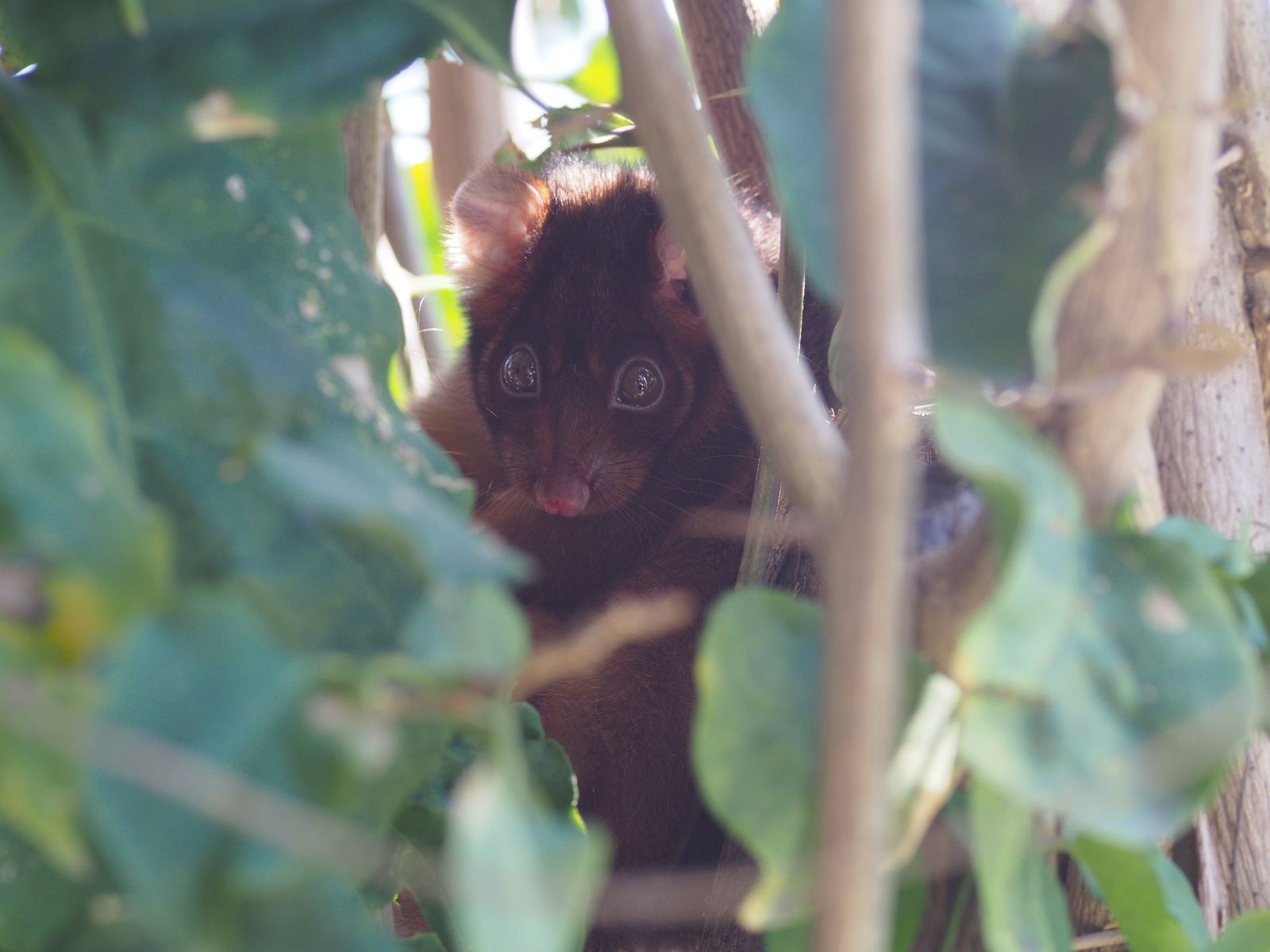
purple fringing around highlights

These are pretty rare examples but it does happen every now and then every few thousand shots. But if you feed it a shot it doesn't like and get unlucky this is what can happen - nothing LR's defringe/dehaze can't deal with usually, although that blue haze one is trickier than usual.
_________________
https://www.flickr.com/photos/piggsyface/
You can't fax glitter. |
|
| Back to top |
|
 |
Musashichan


Joined: 18 Nov 2015
Posts: 96
|
 Posted: Wed Jun 13, 2018 10:32 am Post subject: Posted: Wed Jun 13, 2018 10:32 am Post subject: |
 |
|
Musashichan wrote:
Hello, i just received the tokina version of the 90mm f/2.5, finally able to make a first batch of test shots to see the difference with the Kiron/Komine quality.
I think the Kiron / Vivitar / Lester a. Dine family, 90mm f/2.5, 2.8, 100mm and 105mm f/2.8 can all be put in the same level, test shots are just impossible to differentiate.
As shown above and here, the Tokina is clearly above all the others...outstanding sharpness and great chromatic management (almost perfect, only a real high quality apo could do better).
 Test shots from Vivitar 90mm f/2.5 Macros by Yann Dubois, sur Flickr Test shots from Vivitar 90mm f/2.5 Macros by Yann Dubois, sur Flickr
I made the focus on the "F" from FED, as you can see, global rendering is pretty similar in sharpness and bokeh but you can spot the contrast upgrade on the Tokina shots. Texture and definitionis almost perfect and better even at 2.5.
 Test shots from Vivitar 90mm f/2.5 Macros by Yann Dubois, sur Flickr Test shots from Vivitar 90mm f/2.5 Macros by Yann Dubois, sur Flickr
When zoomed in, you can see why the global image seems to be better : nice rendering of the metal texture, reflections and at 5.6 you can even see the texture in the FED engraving, perfect sharpness.
I'll see on a real life shot if the difference is clearly visible too.
_________________
Visit my website : http://www.vintagephotography.fr
Flikr : https://www.flickr.com/photos/60427575@N08/ |
|
| Back to top |
|
 |
caspert79


Joined: 31 Oct 2010
Posts: 2917
Location: The Netherlands
|
 Posted: Wed Jun 13, 2018 1:25 pm Post subject: Posted: Wed Jun 13, 2018 1:25 pm Post subject: |
 |
|
caspert79 wrote:
Awesome flower picture! |
|
| Back to top |
|
 |
PBFACTS


Joined: 24 Dec 2008
Posts: 564
|
 Posted: Wed Jun 13, 2018 4:37 pm Post subject: Posted: Wed Jun 13, 2018 4:37 pm Post subject: |
 |
|
PBFACTS wrote:
| Musashichan wrote: |
Hello, i just received the tokina version of the 90mm f/2.5, finally able to make a first batch of test shots to see the difference with the Kiron/Komine quality.
I think the Kiron / Vivitar / Lester a. Dine family, 90mm f/2.5, 2.8, 100mm and 105mm f/2.8 can all be put in the same level, test shots are just impossible to differentiate.
As shown above and here, the Tokina is clearly above all the others...outstanding sharpness and great chromatic management (almost perfect, only a real high quality apo could do better).
 Test shots from Vivitar 90mm f/2.5 Macros by Yann Dubois, sur Flickr Test shots from Vivitar 90mm f/2.5 Macros by Yann Dubois, sur Flickr
I made the focus on the "F" from FED, as you can see, global rendering is pretty similar in sharpness and bokeh but you can spot the contrast upgrade on the Tokina shots. Texture and definitionis almost perfect and better even at 2.5.
 Test shots from Vivitar 90mm f/2.5 Macros by Yann Dubois, sur Flickr Test shots from Vivitar 90mm f/2.5 Macros by Yann Dubois, sur Flickr
When zoomed in, you can see why the global image seems to be better : nice rendering of the metal texture, reflections and at 5.6 you can even see the texture in the FED engraving, perfect sharpness.
I'll see on a real life shot if the difference is clearly visible too. |
There is a little problem
There are NO 90mm 2.5 From Kiron .. The kiron is a 105mm/2.5 and the vivitar 90mm macro is the 2.8 komine OR the 2.5/S1 (from tokina and same lens as the atx- except coating)
The komine is known to be a very good lens but also known to be under in iq from the kiron or Tokina which are more or less on par
_________________
OM USER .. I KEEP/USE:
Om2 sp + T32 (grip/filter/zoom) + T8
+ Zuiko 16mm 3.5 / 55mm 1.2 / 65-200 4/ x1.4
+ Sigma 8mm 4.0 / 14mm 3.5 / 18-35 3.5-4.5
+ Tamron 35/105 2.8
+Tokina 150/500 5.6
+ Kiron 105/2.8 macro 1:1
+ Vivitar S1 90/180 falst field macro
+ 2x Doubler HR7
>>I SELL: OM10 + OM4ti
+ i sell: OM Md1 + Md 2 + Grip PowerPack + charger
+ i sell: OM Zuiko 24mm 2.8 / 28mm 3.5 / 50mm 1.8 / 50mm 1.4 / 50mm 3.5 macro / 35-70 3.6 / 35-105 3.5-4.5 / 75-150 4 / 500mm / 2xA
+ i sell: OM Kiron 28/105 3.2-4.5 / 1.5 converter
+ i sell: OM Makinon reflex 5.6/300 + Spector reflex (makinon) 500mm
+ i sell: OM Macro panagor extender 1:1
+ i sell: OM Sigma 16mm 2.8 fisheye (last version) / 21-35 3.5-4.2 ot/ 28-70 2.8 /1000mm mirror
+ i sell: Tamron 28-70 3.5-4.5 / 28-80 sp 3.5-4.2 / 28-135 sp 4-4.5 / /28-200 3.5 / 35-135 3..5-4.5 / 90mm sp macro 1:1 2.8
+ i sell: OM Soligor 2x doubler / x3 converte
+ i sell: Soligor FisheEye x0.15
+ i sell: OM Tokina 28/135 4-4.6 / 70/210 3.5 (= vivitar S1 v2)
+ i sell: OM Vivitar 28-70 3.5-4.8 / 28-90 s1 2.8-3.5 / 35-70 2.8-3.8 / 55/2.8 Macro 1:1 (komine) / 70-150 3.8 ot (kiron) / 75-150 ot 3.8 (tokina + 2x matched)
+ i sell : OM cosina 100-500 5.6/8 |
|
| Back to top |
|
 |
Musashichan


Joined: 18 Nov 2015
Posts: 96
|
 Posted: Wed Jun 13, 2018 7:25 pm Post subject: Posted: Wed Jun 13, 2018 7:25 pm Post subject: |
 |
|
Musashichan wrote:
Yes my mistake, i cinfuse the 105 Kiron i have with the 90 2,5 Komine, i'll redo...i saw too that the aperture didn't close at 5,6 with the komine because i didn't lock the adapter...
Have to rework 
I have the 3 version, so we'll see which one is better but i think there will be no difference between the komine 90mm and 105 kiron...
_________________
Visit my website : http://www.vintagephotography.fr
Flikr : https://www.flickr.com/photos/60427575@N08/ |
|
| Back to top |
|
 |
Musashichan


Joined: 18 Nov 2015
Posts: 96
|
 Posted: Thu Jun 14, 2018 7:28 am Post subject: Posted: Thu Jun 14, 2018 7:28 am Post subject: |
 |
|
Musashichan wrote:
I make another batch of test shots with the Bokina from Tokina : Vivitar Series 1, the Vivitar 90mm f/2.5 from Komine factory and the 100/105mm Vivitar f/2.8 from Kiron factory.
 Vivitar Macros test shots by Yann Dubois, sur Flickr Vivitar Macros test shots by Yann Dubois, sur Flickr
As you can see the constrast is better wide open on the Tokina, sharpness too if you look closely or zoom in.
 Vivitar Macros test shots by Yann Dubois, sur Flickr Vivitar Macros test shots by Yann Dubois, sur Flickr
Zoom shows the very very good definition of the Tokina wide open, this will grant a nice use on real life shots wide open when you want to have a sharp subject and perfect bokeh. Other lens are really good too, they are highly recommand and i understand why. Chromatic aberration is visible on the 3 lenses but reflections are much nicer on the Tokina, the glow aspect of the Kiron and Komine will make the subjects less sharpness. Closed, it's almost impossible to spot which one is better...
_________________
Visit my website : http://www.vintagephotography.fr
Flikr : https://www.flickr.com/photos/60427575@N08/ |
|
| Back to top |
|
 |
|
|
